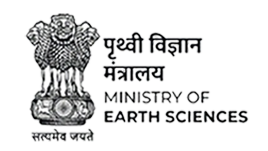









| Abstract Submission No. | ABS-04-0181 |
| Title of Abstract | MESOSCALE EDDY DYNAMICS IN THE EASTERN ARABIAN SEA |
| Authors | MIDHILA VARNAV*, JITHIN ABRAHAM K, FRANCIS PA |
| Organisation | ESSO INCOIS |
| Address | INDIAN NATIONAL CENTRE FOR OCEAN INFORMATION SERVICES, PRAGATHINAGAR , HYDERABAD, TELANGANA, India Pincode: 500090 E-mail: m.varna-rf@incois.gov.in |
| Country | India |
| Presentation | Oral |
| Abstract | The present study aims to explore and quantify the characteristics and dynamics of mesoscale eddies in the eastern Arabian Sea (EAS), an area that has received less attention compared to the western Arabian Sea (WAS). We utilize 26 years of altimeter data and numerical simulations to achieve this. Our findings reveal that the continental slopes in the northern and southern parts of the EAS are critical regions for eddy generation. These eddies generally propagate westward at speeds ranging from 10 to 30 cm/s, with most of them dissipating before reaching the central Arabian Sea (AS). The seasonal distribution of eddies in the EAS region was also studied, and it was found that a higher number of eddies are formed in the EAS during winter (44.2%), followed by spring (40.9%), and summer (10.5%). In contrast, the WAS experiences a larger proportion of eddies during summer (36.4%), with winter (30%) and spring (24%) also contributing significantly. While the generation of eddies in the WAS is primarily influenced by the instability caused by strong monsoon winds, our analysis demonstrates that the winter season in the EAS is characterized by significant positive baroclinic instability. This instability is associated with the propagation of intraseasonal, coastally-trapped Kelvin Waves from the equatorial Indian Ocean to the Arabian Sea and subsequent Rossby wave radiation. Furthermore, our results highlight that remote forcing in the EAS has a more significant impact on setting up instabilities compared to local wind forcing. Estimations of eddy-induced transport indicate that mesoscale eddies contribute to approximately 22% and 8% of the westward transport of heat and salt, respectively, in the upper 100 m of the EAS. This effect is particularly prominent in the southern part, during winter, when low-saline water from the Bay of Bengal (BoB) intrudes into the AS. |
| Keywords | Meoscale eddies,Instability,Eastern Arabian Sea,Coastal Kelvin Waves |
| For Awards | yes |